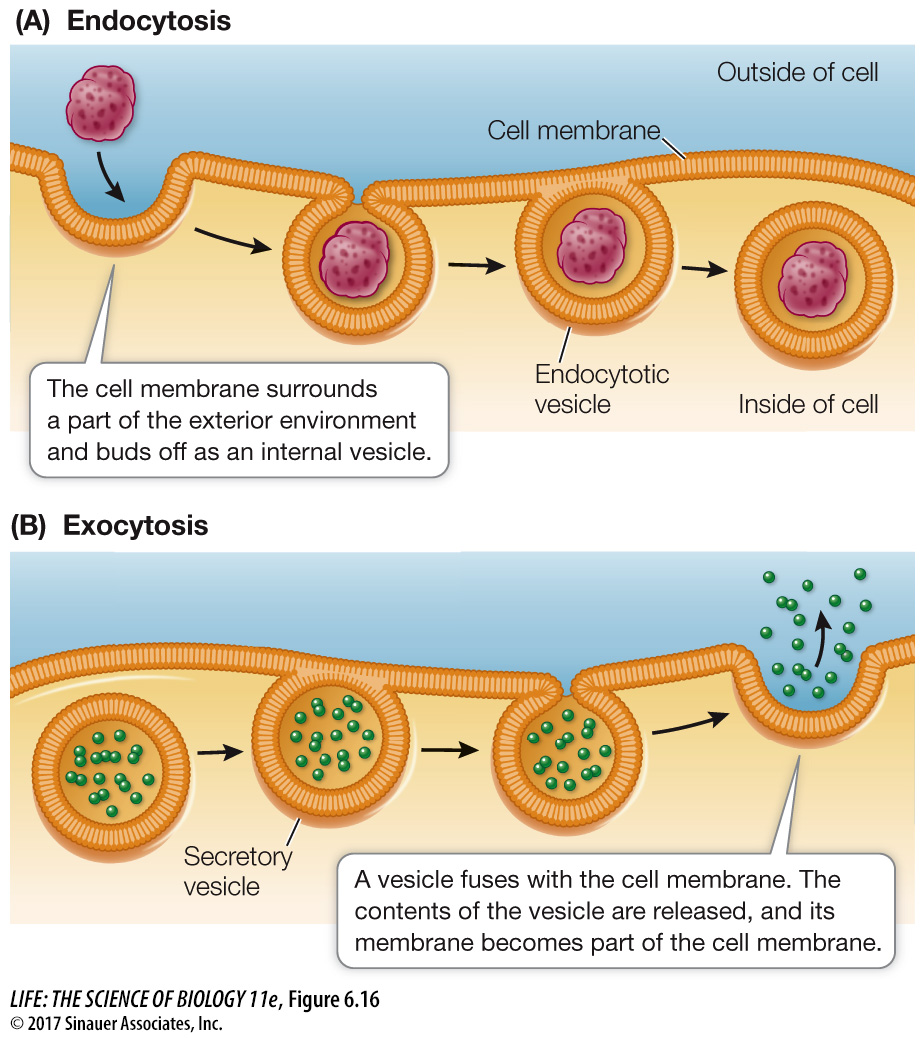Macromolecules and particles enter the cell by endocytosis
Endocytosis is a general term for a group of processes that bring small molecules, macromolecules, large particles, and even small cells into the eukaryotic cell (Figure 6.16A). We described an example of endocytosis earlier in the chapter, involving integrins (see Figure 6.8). Generally, there are three types of endocytosis: phagocytosis, pinocytosis, and receptor-

Media Clip 6.1 An Amoeba Eats by Phagocytosis
In phagocytosis (“cellular eating”), part of the cell membrane engulfs large particles or even entire cells. Unicellular protists use phagocytosis for feeding, and some white blood cells use phagocytosis to defend the body by engulfing foreign cells and substances. The food vacuole or phagosome that forms usually fuses with a lysosome, where its contents are digested (see Figure 5.10).
In pinocytosis (“cellular drinking”), vesicles also form. However, these vesicles are smaller, and the process operates to bring fluids and dissolved substances into the cell. Like phagocytosis, pinocytosis can be relatively nonspecific regarding what it brings into the cell. For example, pinocytosis occurs constantly in the endothelium, the single layer of cells that separates a tiny blood capillary from the surrounding tissue. Pinocytosis allows cells of the endothelium to rapidly acquire fluids and dissolved solutes from the blood.
In receptor-
mediated endocytosis , molecules at the cell surface recognize and trigger the uptake of specific materials.
Let’s take a closer look at this last process.